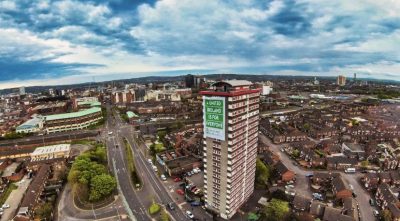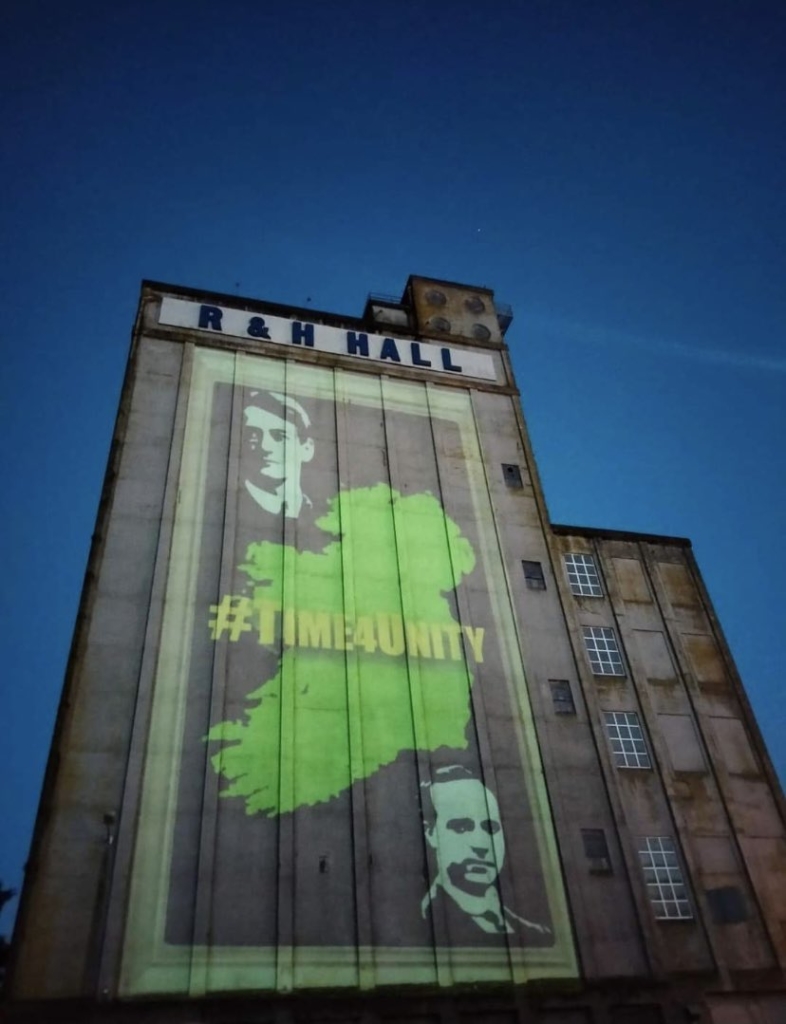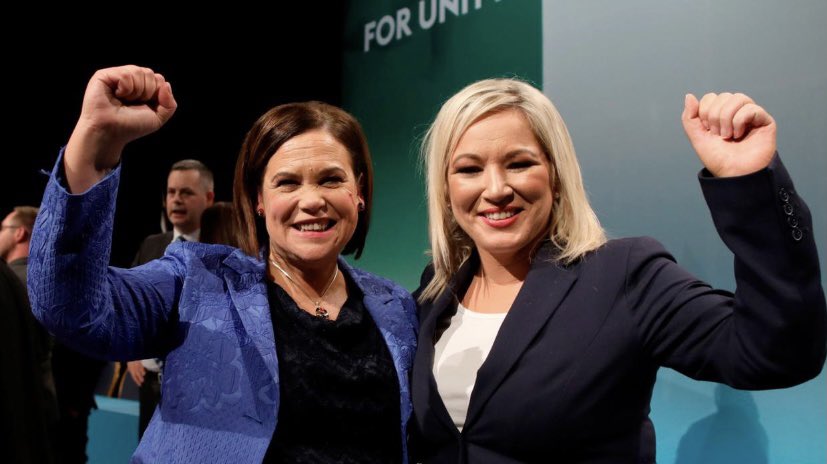100 Years after Partition: Is Irish Re-Unification in Sight?

All Global Research articles can be read in 51 languages by activating the “Translate Website” drop down menu on the top banner of our home page (Desktop version).
Visit and follow us on Instagram at @crg_globalresearch.
***
The centenary of the Northern Irish state comes amidst a deep crisis of unionism in the north and talk of a United Ireland growing across the island by the day. Ben Wray, Bella’s European Feature Writer, speaks to authors and campaigners for a United Ireland about the origins of partition and the prospects for re-unification.
On 3 May 1921, the UK passed the Government of Ireland Act, which was intended to divide Ireland into two governing entities: north and south Ireland. Both territories would remain British jurisdictions, and provisions were in place for their eventual reunification.
The British southern state never got off the ground, rejected by the vast majority of people in the 26 counties in favour of independence, but the smaller six-county Northern Irish state held an election on 24 May, with the Ulster Unionist Party winning 67% of the vote. On the 22 June, the Northern Irish parliament officially opened. Ireland had been partitioned.
100 years on, the Northern Irish state remains, but increasingly its hook to the UK state appears to be on a shoogly peg. The Democratic Unionist Party (DUP), the biggest party in Stormont and the leading voice of unionism in Northern Ireland for almost two decades, is in a deep crisis, ditching two leaders in the space of a few weeks, and with collapsing support in the polls. Sinn Féin, the Irish nationalist party, is on course to win the NI Assembly elections next year and thus take the First Minister’s chair in Stormont for the first time. Whatever the architects of partition had in mind, it wasn’t this.
Partition: A “compromise solution”, or an imperialist ploy?
The BBC is running a series to mark the centenary of Northern Ireland and in a piece on how the Irish border was created, Eimear Flanagan states: “Partition was viewed by the British Government as a compromise solution.”
He adds:
“Nationalists had campaigned for ‘Home Rule’ for decades, seeking a devolved parliament in Dublin. But unionists, who were mainly Protestant, did not want to be ruled from Dublin.
“Unionists held a majority in the province of Ulster in the north-east, but in Ireland as a whole they were greatly outnumbered by nationalists, who were mainly Catholic.”
In this presentation, the British Government appears as the paternal, even-handed administrator, simply looking to keep the peace by negotiating a compromise, and with no intrinsic interests of its own. Kieran Allen, Sociology professor at the University of Dublin and author of the recently released ’32 counties: the failure of partition and the case for a United Ireland’, is unsurprised by the BBC’s depiction.
“That is traditionally how the British Empire is presented, that it’s a sort of neutral arbiter, between Hindus and Muslims in India, or being Catholics and Protestants in Northern Ireland.”
Allen says that Irish partition was actually part of a broader Tory strategy towards Empire, which sought to deal with growing discontent in the colonies after WW1 by “whipping up chauvinism”. The creation of the six-county state in the north was specifically designed with this purpose in mind; as a bulwark against revolution.
“What they drew up was essentially an arbitrary division [of Ireland],” Allen tells Bella. “The original proposal for partition in 1912 was for four-counties, then there was a proposal in 1920 for a nine-county Ulster, and eventually they settled on a six-county Ulster, because, as James Craig, the first prime minister of Northern Ireland, said at the time, that was the largest amount of territory that would allow for ‘a decisive Protestant majority in which unionist power would be guaranteed, in perpetuity’. That’s why it happened.”
The violence against Catholics and nationalists who opposed the creation of the new state, especially in Belfast, provides further evidence of the sectarianism in the project from its birth. Ten per cent of the nationalist population were forced out of Belfast in the first years of the NI state. Those that remained were treated as second-class citizens. The fact that one party, the Ulster Unionist Party, was in power for over 50 years from 1921 to 1972, when Stormont was abolished, an unprecedented electoral domination in the western world, tells its own story.
The less talked about side of partition is the impact it had on the 26-counties on the other side of the border, which became a “mirror image” of the northern state in its conservatism, Allen argues.
“What you have in the south is a revolutionary wave after 1918,” he says, “but with the the help of British guns and the British cajoling a section of the republican movement into suppressing their former allies, a counter-revolution developed. That counter-revolution meant suppressing all the social grievances, but it also meant using Catholicism as a kind of spiritual anti-depressant: ‘we are the most Catholic country in the world, we want nothing to do with divorce, nothing to do with abortion and so on’.
“The proof that partition produced this mirror image of conservatism is that it was one of the few countries in western Europe where there was no left-right divide.”
Today, while much has changed on both sides of the border, much still stays the same. In the north, a census poll due later this year is likely to show that there are more Catholics than Protestants for the first time, but also the number of people who don’t identify as either has tripled since 1990 to 18%. Still, nearly a quarter of a century after the Good Friday Agreement, Northern Irish politics remains locked in a sectarian prism, evidenced over the past week by the DUP’s resistance to an Act for Irish language rights at Stormont.
In the South, a massive Yes vote in the 2015 and 2018 referendums on abortion rights and equal marriage has shown the Catholic Church no longer is the dominant institution it once was. Nonetheless, it still runs 94% of primary schools, and is still politically shielded by the two conservative establishment parties which have dominated Irish politics in the 26 counties since independence, Fine Gael and Fianna Fáil, which remain in power at the Dáil today, in a three-way coalition with the Greens. Ireland is still shaped by partition.

Brexit and the crisis of unionism: short-term, or existential?
Boris Johnson was cheered to the rooftops when he turned up at a 2018 DUP conference to say that “no British Conservative government could or should sign up to any such arrangement” which included border checks and customs controls down the Irish Sea. Two years later, after replacing Theresa May as Prime Minister on the back of such commitments and with the clear support of the DUP for his leadership, Johnson did exactly what he promised not to do, in the form of the Irish protocol in his Brexit agreement with the EU. The DUP had been duped.
What has followed is a deep crisis of unionism in Northern Ireland, with the DUP at the centre of the recriminations. The party got rid of Arlene Foster as First Minister for her part in the protocol, only to junk her replacement, Edwin Poots, weeks later. Poots’ close ally Paul Givan, who has just been installed as the new First Minister to replace Foster, has now been told by the party that he has to go too. Meltdown would be putting it lightly.
Profound questions have now been opened up for unionists: ‘If the protocol remains, are we really a full part of the UK anymore? And if the Tories are willing to betray us for a deal with the EU, what are we really worth to the British anyway?’
The rage and despair this existential crisis has brought on has been on full show as marching season has kicked in. One report in the Guardian of one such march heard from Joe, 63, terminally ill with cancer, who lit aflame a banner saying ‘United Ireland’ on it. Asked if the sort of violence seen in The Troubles could return within his lifetime, he said: “If that’s the way it has to be, then that’s how it’ll be.”
We have already seen rioting in April, and marching season has been described as a “tinderbox” with the ongoing ‘sausage war’ between the UK and the EU over the protocol looming in the background. It may be the case that Johnson can find another compromise with Brussels which can give the DUP an out, but Daniel Finn, features editor of Jacobin and author of ‘One Man’s Terrorist: A political history of the IRA’ (2019), tells Bella that the DUP now faces long-term electoral pressures which will not go away easily.

“The DUP has got this dilemma, because in the polls they are losing support in both directions – on one side to the Alliance party, which is a more liberal party, and on the other side to the Traditional Unionist Voice, which is a very-hard line unionist party. You can’t really win back both of those groups of people, so there is a re-alignment that is taking place which I think will continue.”
How likely is a border poll?
While the DUP is in crisis, Sinn Fèin is on the rise. The 2020 Republic of Ireland election gave the Irish nationalists the most votes in the 26-county state for the first time. In 1997, the year before the Good Friday Agreement, they had won just 2.5% of the vote and one seat in the south. Sinn Fèin were only kept out of power by Fine Gael and Fianna Fáil agreeing a power-sharing deal, along with the Greens. Since then, polls show Sinn Fèin extending its lead to one-third of voters.
The party’s newly found support in the south has been built on focusing on social justice issues like housing and health, which has attracted young people in particular, but given Brexit and the crisis of unionism, Sinn Fèin’s growing support on both sides of the border is galvanising demands for a border poll. This is causing Fine Gael and Fianna Fáil, which for years have paid lip service at best to the idea of a United Ireland at some point in the distant future, to have to adapt their rhetoric.
At the weekend, Leo Varadkar, the former Taoiseach and current leader of Fine Gael and deputy prime minister in the government, made waves after telling his party conference that it “should be part of our mission as a party to work towards” re-unification, and that “no one group can have a veto” on the issue.
Following criticism of his remarks, including from Northern Ireland Secretary Brandon Lewis, who told him to “dial down the rhetoric, particularly at this time of year”, Varadkar said that for many people, including in his own party, it was “always the wrong time” to talk about a united Ireland, adding that there was “no majority anymore” in NI for unionism or nationalism, and that a new middle-ground, particularly of young people, want to talk about it.
Allen says Varadkar’s comments highlight the “massive shift in consciousness in the south” on the national question.
“It’s a fact that about 70% of the southern population are for Irish unity, and not just are they for it, they believe it will happen in the coming decade. And therefore Fine Gael, being a clever bourgeois party, are re-positioning themselves to say ‘we are for Irish unity as well’.”
Gerry Carlile, CEO of Ireland’s Future, a civic organisation campaigning for Irish re-unification, welcomed Varadkar’s intervention, but said that “planning and preparing should be well underway” in Dublin, citing the Scottish example pre-2014 referendum – where a White Paper was published on independence – as the sort of work that should be taking place in the Dáil. Specifically, Ireland’s Future are calling on the RoI government to establish a Citizen’s Assembly on the constitutional future of Ireland.
Pressuring the RoI state into seriously pushing for Irish unity is just one hurdle to overcome in getting a border poll. The biggest one is the UK state. The Good Friday Agreement contains a clause which says that the Northern Ireland Secretary “shall exercise the power [to call a referendum] if at any time it appears likely…that a majority of those voting would express a wish that Northern Ireland should cease to be part of the United Kingdom”. This leaves the power over Ireland’s future in the hands of a British minister, and on conveniently vague terms as to how the Minister is to decide whether NI “appears likely” to vote for Irish unity.
Carlile tells Bella that they believe “the criteria has been met” for a border poll, highlighting that a majority of Northern Irish members of the UK Parliament are for the first time pro-Irish unity. Ireland’s Future have written to Brandon Lewis to clarify what is the criteria the UK Government uses to decide whether a referendum should be held.
Some have speculated that while the UK state may have had a material interest in holding onto NI in the past, today it may be quite happy to see it go, especially given that NI spending massively outstrips its tax revenues. Finn says that while he “wouldn’t dismiss that view out of hand”, there are good reasons to believe that they still have a “political interest”.
“A political interest doesn’t have to have a direct economic motive; there are questions about the general power and prestige of the British state in world affairs. The state relies to an extent on symbolic power – or soft power – as well as economic and military power, and its territory is part of the prestige of the state.
“And there is also the political factor of British nationalism. Even if you assume that Johnson’s government doesn’t have any particular interest in partition for its own sake and doesn’t really care about what happens in Northern Ireland, which is to some extent true when you see the way they reached their agreement on Brexit and the Irish Protocol, they also have to think about the knock on implications [of Irish unity], for instance in terms of what happens with Scotland.”
What kind of United Ireland?
If a border poll can be secured and a yes vote won, what would a United Ireland look like? As the possibilities of an end to partition have grown, an increasing number of thinkers on left and right have been putting their minds to this question.
Michael McDowell, a former leader of Ireland’s first openly neoliberal party, the Progressive Democrats, has made the case for Irish unity based on minimal change to the current state structures on both sides of the border via a confederal system.
“A confederal form of unity would leave both jurisdictions largely intact and in which…only limited powers [would be] devolved by each part of the confederation to its institutions,” he argues.
This limited change vision is an attempt to reassure elites in the north and south that Irish unity can be achieved without the interests of either being undermined and to convince unionists in the north that they will still have important representation following re-unification. However, for many who are coming round to the idea of a United Ireland, it’s surely the prospect for transformative change across the island which motivates them.
In Northern Ireland, chronic low wages and sluggish investment rates – well below other UK regions – has led to many questioning what Stormont and the UK state have actually delivered in terms of improving living standards since the Good Friday Agreement. In the Republic of Ireland, the country has carved out a unique position within the EU as a tax haven, attracting some of the world’s largest companies to headquarter in Dublin, but that model has brought with it astronomical private rents as wealth inequality surges, some of the most expensive childcare in the EU, large primary school class sizes and the longest hospital waiting times in Europe. A poll found one-quarter of the electorate in the North said the lack of an NHS in the south makes them more likely to vote for the Union in any referendum.
If constitutional change does not deliver social justice on both sides of the border, merely integrating the north to create a whole-island tax haven, then is that really progress?
For Carlile, emerging debates about what a United Ireland should look like is a healthy sign.
“The reality is the conversation is happening on the ground and right across this entire island,” he says.
Ireland’s Future are currently setting up public meetings across the country to facilitate that conversation, and Carlile is optimistic about the Irish unity movement’s prospects.
“Without a doubt this is a very promising period,” he tells Bella. “Coming out of the pandemic, this is the time for change, the time to start thinking about what would make the country better.”
*
Note to readers: Please click the share buttons above or below. Follow us on Instagram, @crg_globalresearch. Forward this article to your email lists. Crosspost on your blog site, internet forums. etc.
Featured image is from Bella Caledonia

